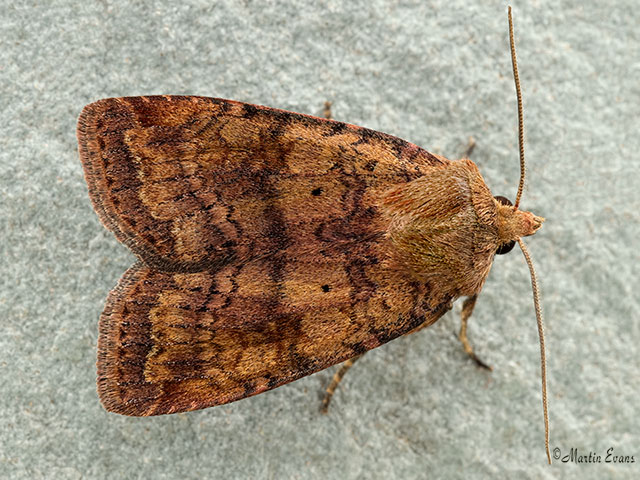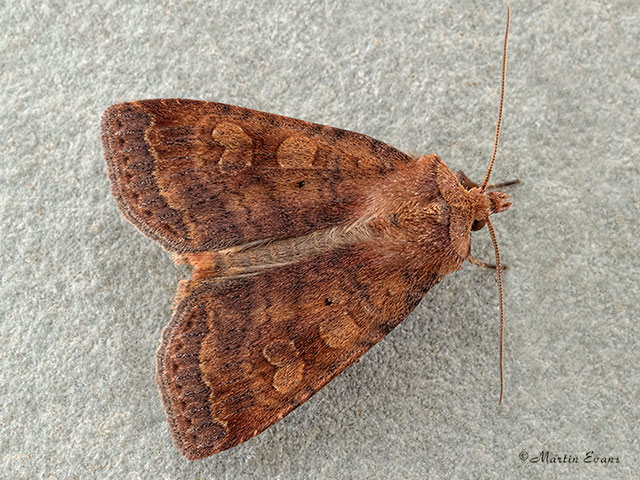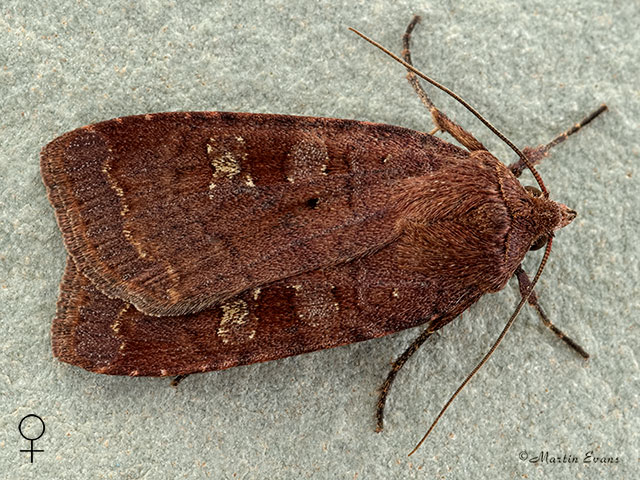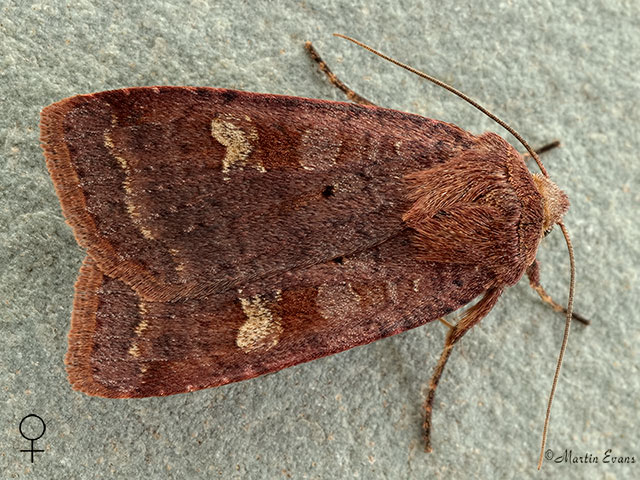Noctuidae
73.331 Barred Chestnut Diarsia dahlii (Hübner, [1821])
Local
Similar species: This species is variable which means it needs a combination of characters to separate it from the even more variable Ingrailed Clay Diarsia mendica which is often smaller (13 to 17mm), has a straighter leading edge to the forewing and is usually paler at the outer edge. It also either lacks or has a less prominent dark central bar and dark suffusion along the trailing edge. Southern specimens are generally pale, but in Scotland the moth becomes even more variable with dark red-brown forms and these may also have a dark outer edge. Small Square-spot Diarsia rubi is smaller (12 to 14mm) and has a straighter leading edge to the forewing. The outer central cross-line is usually much smoother.
Forewing: 15 to 18mm
Habitats: Moorland, acid deciduous woodland and wooded heathland.
Habits: The moth feeds at the blossoms of Heather, Wood Sage and other flowers after dark. It is attracted to light.
Foodplant: The nocturnal larva feeds on Dandelion, docks, plantains and other herbaceous plants. In the spring they will also eat the fresh shoots of Bilberry, Bramble, birches, sallows and other woody species. It hides in the leaf litter or loose soil during the day. It pupates in a cocoon under the soil.










